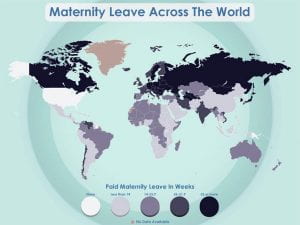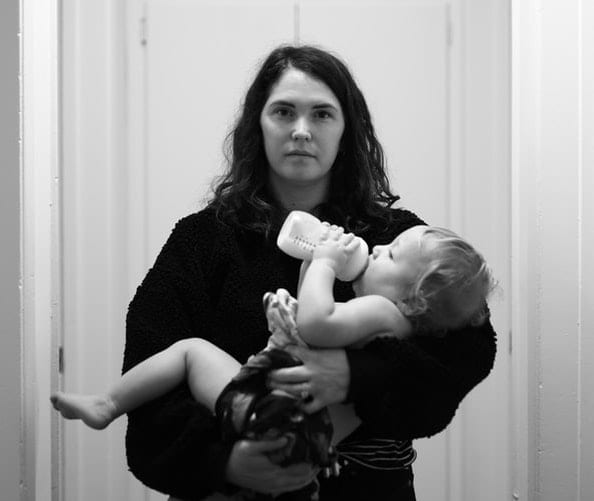
The United States is one of three countries in the world, and the only first world country, that does not provide paid time off upon the welcoming of a new child into the home. Today, eighty-two percent of U.S. voters, across party lines, support implementation of a national paid family and medical leave policy. However, only thirteen percent of American workers have access to such privileges. Much of the debate surrounding the topic involves who will pay for such policies, and who exactly should be eligible to receive the benefits. Whether you have personally been put at a disadvantage by this situation or have the privilege of merely learning about it from media outlets, such as Senator Bernie Sander’s audacious Instagram posts, it is quite difficult to ignore the prevalent issue of the lack of paid parental leave in America.
Paid Parental Leave as a Human Right
The scarcity of paid parental leave is a violation of various aspects of the Universal Declaration of Human Rights. Article 23 of the UDHR states that everyone has the right to “just and favorable conditions of work” and “remuneration ensuring for himself and his family an existence worthy of human dignity and supplemented, if necessary, by other means of social protection.” The definitions of adequate work conditions and social protections can and will obviously be interpreted by society in different ways over time; however, Article 25 goes on to state:
- “Everyone has the right to a standard of living adequate for the health and well-being of himself and of his family, including…medical care and necessary social services, and the right to security in the event of unemployment, sickness, disability, widowhood, old age or other lack of livelihood in circumstances beyond his control.
- Motherhood and childhood are entitled to particular care and assistance. All children, whether born in or out of wedlock, shall enjoy the same social protection.”
Regardless of not being stated specifically, it is a common belief that paid parental leave exists within the realms of the above stated rights and is an ethical standard to which society should be held. Pushing personal opinions aside, a recent article from The Guardian says “The American College of Obstetricians and Gynecologists (ACOG) recommends women take at least six weeks off work following childbirth. But with no federally mandated paid family leave, for many women maternity leave is an unaffordable luxury.”
The Reality of a Working Mother without Parental Leave

As the participation of women in the workforce has steadily increased since post-World War II, the modern era expects women to work full-time as if they are not raising children, yet also expects women to raise children as if they are not working full-time jobs. This concept is evident in many American women’s lives who push off having a career until their children are grown or wait to have children until they are settled in their career. With the knowledge that many women do not have access to parental leave, another question is evoked: what happens to working women when a child is born? Those who are lucky enough to have a planned pregnancy may opt to save as many sick days as possible before their delivery date to be used during their recovery. But unfortunately, in many cases women can be forced to leave their jobs because of choosing to give birth.
Not all Families are Impacted the Same
In addition to women being disproportionately affected on a large scale, there are various other societal groups which are put at a greater disadvantage. According to a June 2021 article on BBC, “workers in blue-collar jobs are less likely to get paid parental leave than those with corporate jobs.” This not only affects the lower-income spectrum of the working class, but therefore largely affects BIPOC women and families at a higher rate than their white counterparts. Specifically in the post-war years, resistance formed through the idea that granting universal leave to all workers would encourage the “wrong” families to have the ability to produce. The UDHR lays out in Article 2 that all persons should have access to such human rights without any distinction regarding not only sex and gender, but race and social status as well.
What does the fight towards ensured parental leave in America look like today?

The fight for paid parental leave is not new to the agenda of human rights crises. In November of 1919, The International Labor Organization was quoted by the International Congress for Working Women in stating 12 weeks of paid parental leave is a “medical necessity and social right.”
Today, lawmakers across America’s political spectrum voice their support for paid parental leave. Regarding the public, advocating for paid parental leave should be accompanied by voting for politicians at a federal and state level that will bring action to further implementing this agenda into legislation. There are also various activist organizations nationwide that can be further magnified by volunteers or monetary donations, including the PL+US and the National Partnership for Women and Families.

